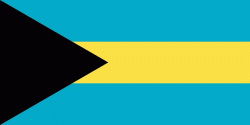Freeport (Freeport)
Freeport is a city, district and free trade zone on the island of Grand Bahama of the northwest Bahamas. In 1955, Wallace Groves, a Virginian financier with lumber interests in Grand Bahama, was granted 50000 acres of pineyard with substantial areas of swamp and scrubland by the Bahamian government with a mandate to economically develop the area. Freeport has grown to become the second most populous city in the Bahamas.
The main airport serving the city is the Grand Bahama International Airport, which receives domestic flights from various islands of the Bahamas as well as several international flights from the United States and Canada. Freeport is also served by domestic Bahamian ferry services to other islands.
The Grand Bahama Port Authority (GBPA) operates the free trade zone, under the Hawksbill Creek Agreement signed in August 1955 whereby the Bahamian government agreed that businesses in the Freeport area would pay no taxes before 1980, later extended to 2054. The area of the land grants within which the Hawksbill Creek Agreement applies has been increased to 138000 acres.
Freeport is a 230 sqmi free trade zone on Grand Bahama Island, established in 1955 by the government of The Bahamas. The city of Freeport emerged from a land grant comprising 50000 acre of swamp and scrub to become a cosmopolitan centre. The Grand Bahama Port Authority (GBPA) operates the free-trade zone, under special powers conferred by the government under the Hawksbill Creek Agreement, which was recently extended until August 3, 2054. The agreement also increased the land grants to 138000 acre.
The city was severely impacted by Hurricane Dorian with damage still being assessed as of 12 September 2019.
The main airport serving the city is the Grand Bahama International Airport, which receives domestic flights from various islands of the Bahamas as well as several international flights from the United States and Canada. Freeport is also served by domestic Bahamian ferry services to other islands.
The Grand Bahama Port Authority (GBPA) operates the free trade zone, under the Hawksbill Creek Agreement signed in August 1955 whereby the Bahamian government agreed that businesses in the Freeport area would pay no taxes before 1980, later extended to 2054. The area of the land grants within which the Hawksbill Creek Agreement applies has been increased to 138000 acres.
Freeport is a 230 sqmi free trade zone on Grand Bahama Island, established in 1955 by the government of The Bahamas. The city of Freeport emerged from a land grant comprising 50000 acre of swamp and scrub to become a cosmopolitan centre. The Grand Bahama Port Authority (GBPA) operates the free-trade zone, under special powers conferred by the government under the Hawksbill Creek Agreement, which was recently extended until August 3, 2054. The agreement also increased the land grants to 138000 acre.
The city was severely impacted by Hurricane Dorian with damage still being assessed as of 12 September 2019.
Map - Freeport (Freeport)
Map
Country - The_Bahamas
 |
 |
The Bahama Islands were inhabited by the Lucayans, a branch of the Arawakan-speaking Taíno, for many centuries. Christopher Columbus was the first European to see the islands, making his first landfall in the "New World" in 1492 when he landed on the island of San Salvador. Later, the Spanish shipped the native Lucayans to and enslaved them on Hispaniola, after which the Bahama islands were mostly deserted from 1513 until 1648, nearly all native Bahamians having been forcibly removed for enslavement or having died of diseases that Europeans brought to the islands. In 1649, English colonists from Bermuda, known as the Eleutheran Adventurers, settled on the island of Eleuthera.
Currency / Language
| ISO | Currency | Symbol | Significant figures |
|---|---|---|---|
| BSD | Bahamian dollar | $ | 2 |
| ISO | Language |
|---|---|
| EN | English language |















